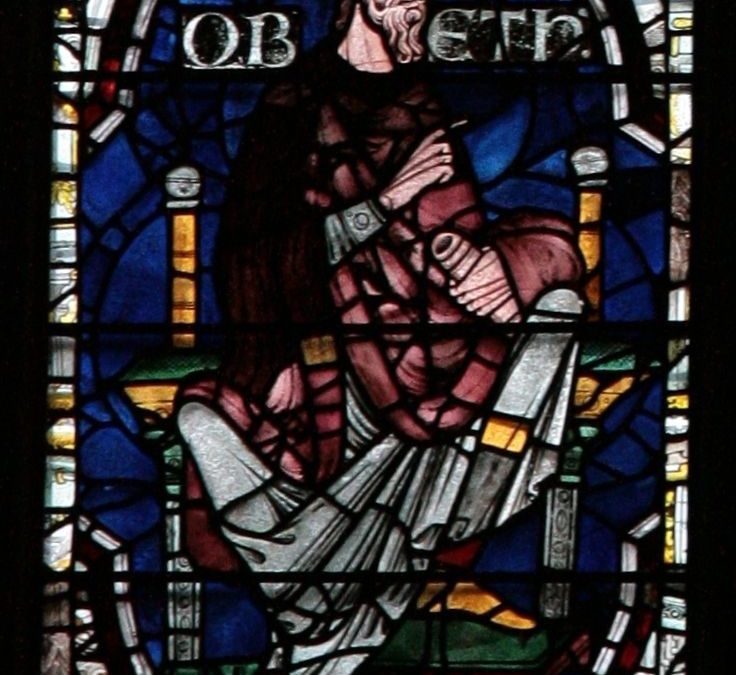
by Moe | Sep 15, 2019 | Freemasonry, History of the Brotherhood, Latest Media
In the Ancient Craft of Masonry, Hiram is called the architect of the Temple and the Widow’s Son from the tribe of Naphtali who was the son of a Tyrian bronze worker, contracted by Solomon to cast the bronze furnishings and ornate decorations for the new temple.
It is said that from this reference, the term “Son of the Widow” is synonymous with Freemason and all Freemasons are designated as “Sons of the Widow,” or sons of Hiram. (1)
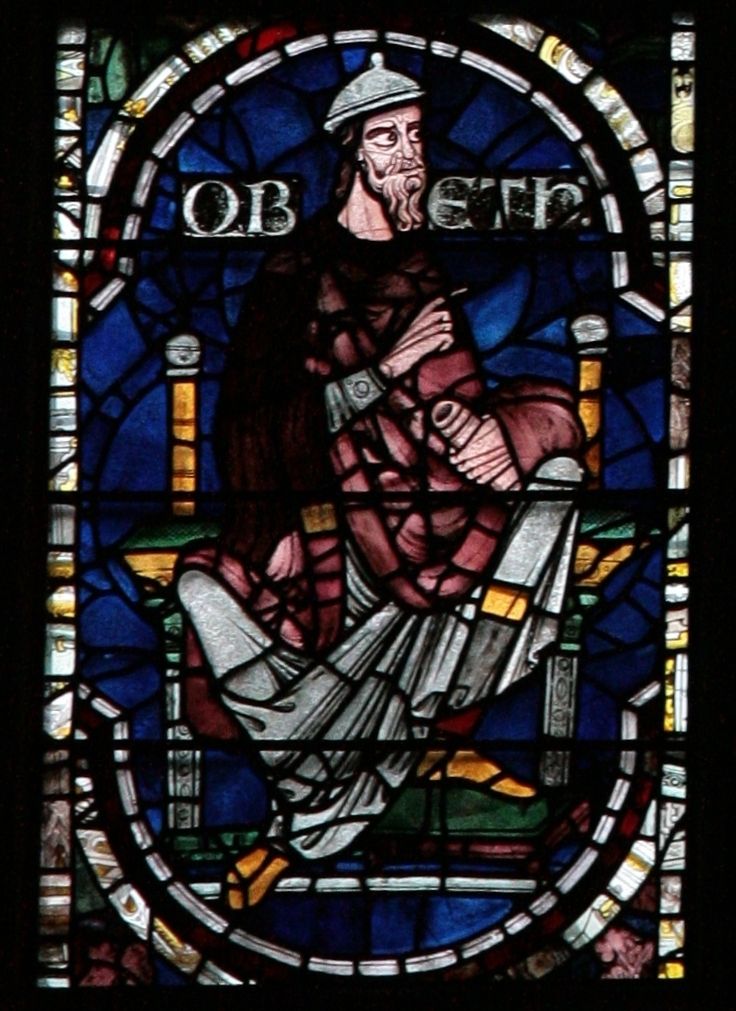
For such an important person, you would think that there would be some information regarding the true identity of this man, but if we study Masonic literature, the Bible and ancient history, you will not find one person who is named “Hiram Abiff”.
The name Hiram Abiff is only used in Freemasonry.
However, when we research Freemasonic history along with both the Old and New Testaments, we will discover that the name Abiff appears to be derived from the title Ob, Obe, Obi, Ab or Abi which means father or my father and was among the Hebrews (Phoenicians) often bestowed as a title of honor and dignity, on the chief advisers and intimate friends of the king. (2)
The person who I have found to be one of if not “the most important widow’s sons” in both the Old and New Testament was a man known as “Obed or Obediah” which I believe the modern Masonic version of the name “Hiram Abiff” is meant possibly to both conceal and represent the same person.
The names of “Obed or Obadiah” were common in Israel for the Tribe of Judah from the days of David and I believe that Abiff or Abi (Obe, Oba etc) are just different spellings of the same name throughout time depending on the language and or era it was written.
It appears that this particular family had a tradition of using the appellation of either Abi, Abdi or Obe to their names that signify their royal rank both as “Patriarchs (Fathers or Peters) and judges of their people (race).”
Names related and or connected to Obed or Obadiah such as Badiah, Obadyah or Obadyahu and old Phoenician as Ebed or Abad, Abibalus, the Greek as Ióbéd and Obed; Septuagint is Obdios and Jehoiada, or as Abadias (ab-a-di’as), and Abdiou and afterward Obed-edom and his sons were assigned to be keepers of the doors of the temple, (1 Chron.)
When we tie these names and thus history together into the true meaning of the name “Hiram Abiff”, what we will find is that the appellation of the “Widow’s Son” does not apply to King Hiram’s son, but most likely to his father whose name who was really the first King of the Hebrews (Tyre/ Byblos/Phoenicians).
For example, some names found related to Abi (Abdi, Obe, Oba, etc.) are, for example, Abijah which is translated “Yahweh is a father,” or “is my father” which is found in the parallel passage in 2 Chronicles 29:1 and Abishai, “father of Jesse,” denotes one to whom Jesse is father, and so with Abihud, “father of Judah,” Abiel, “father of God, and more importantly as it relates to this story, Abidan is “father of a judge.”
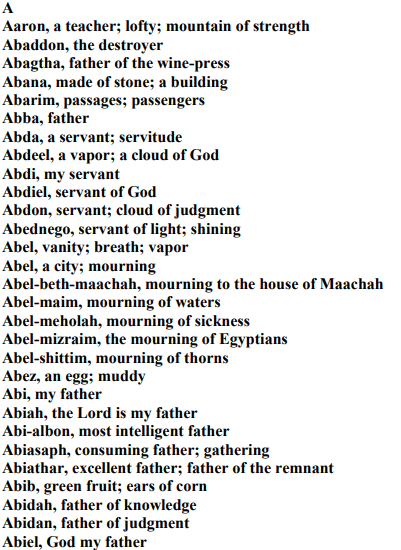
In relation to the story of Hiram Abiff as a servant for Kings David and Solomon of Isreal, you will also find a servant in the Bible a prophet of Baal, a Levite named Obadiah who is one of the most important men in the Old Testament being that he is;
1. The governor of the King of Isreal, Ahab’s palace (1 Kin. 18:3-7, 16).
2. Grandfather of King David and the head of a family of Judah (1 Chr. 3:21).
As you can witness for yourself, this man, Obadiah was a very important person who was not only the governor for the King of Israel’s palace (AKA the Temple), he was also the grandfather of King David and the head of a family of Judah.
Last but not least and has it relates to this story, he was the son of the most important widow of the Old Testament. Let me please explain…
If we are to research the history of the Old Testament (Law), we will find that there was only one person who we can truly document that could be “legally” identified as a “widow’s son” under the old Phoenician (Hebrew) laws in Israel.
In ancient Israel, if a wife’s husband was to die without children, it was looked upon with great unhappiness for a man to die without an heir. Widowhood, as well as barrenness, was a kind of shame and reproach in Israel: Isa. liv. 4, “Thou shalt forget the shame of thy youth,” passed away in celibacy and barrenness, “and shalt not remember the reproach of thy widowhood any more.”
This is why a “widow” was allowed to marry the brother of her deceased spouse, in order to raise children and the continuation of estates in the same family and to perpetuate a man’s name in Israel which became a law.
As I mentioned in a previous article, Abibalus: King Hiram’s Father is the Widow’s Son, who is a prime example of a VERY IMPORTANT widow marrying in such fashion in the bloodline of Hiram is Ruth, who married Boaz, after she had been refused by a nearer kinsman.
Of course, Freemasons will recognize the name Boaz is one of their main symbols of the teachings of Masonry in which Boaz was one of the two pillars which stood on the porch of Solomon’s Temple, the First Temple in Jerusalem and also the Tribe of Judah (Masonic Archons).
Please keep in mind that Boaz is the name of the left hand, or north pillar, that stood at the porch of King Solomon’s Temple.
Ruth is said to be a “Moabitess, having been married to the son of Elimelech, of the tribe of Judah, after the death of her husband and father-in-law, accompanied Naomi, her mother-in-law, into the land of Israel, from love to her, and to true religion.”
They arrive in Bethlehem at the beginning of barley harvest in a state of dire poverty and after the death of her son, Naomi was going to sell “her son’s inheritance and land” unless she can find a Goel who could assert his inheritance rights through her daughter in law, Ruth.
The meaning of Goel comes from the word lig’ol (“to redeem”), hence meaning “redeemer”, or a person who is the closest relative charged with the duty of restoring the rights of another and avenging his wrongs.
In Mathew, the great Masonic secret is revealed, “Boaz begot Obed by Ruth, Obed begot Jesse, and Jesse begot David the king.” (Matthew 1:5–6 NKJV) Boaz is said to be of the clan of Elimelech (Judah) – meaning “God is King or My God if King.”
Boaz was from a royal family and he was also a wealthy landowner and businessmen in Bethlehem when he met Naomi and her daughter-in-law Ruth who we know had the legal rights to the “Crown of Israel”.
By marrying Ruth, he would relinquish his former ancestral rights before the elders of the city, and by legal process gave up his claim, Boaz by marrying Ruth possessed the whole right of Elimelech ie: Israel.
Interestingly, when we search for more information and or history about one of the most important Old Testament prophets who is known as the Widow’s Son and is named Oded or Obediah, there is said to be nothing to be found in the sacred records respecting the life of Obadiah, and the time in which he lived.
But if we fast forward to today, there is a lot of history that syncretizes to who we know of as Obed or Obadiah and there is new archaeological evidence that shines a light on the widow’s son’s true name and this royal family who happens to be the true Patriarchs for the Tribe of Judah.
For example, evidence can be found via an ancient Phoenician seal bears the inscription “Obadiah the servant of the King.”
Some of this new evidence I recently revealed in my previous articles, The World’s Oldest Curse: King Hiram’s Masonic Curse and King Hiram’s Son: Ithobaal.
To recap this research, I explain that King Hiram’s son’s real name was Ithobaal (Ἰθόβαλος; Hebrew Ethbaal, Ishba’al, Latin – Ithóbalos, Εἰθώβαλος; Eithṓbalos – meaning with Baal) and King Hiram’s real name was known under many different spellings of the name Obadiah, Obadias, Ebed, Abibalus, Abidan, Abdi-Heba, Beda, etc. and or Ahirom, Ahiram, Amram, and Hiram which are Masonic alternative spellings of the same name which can all be used interchangeably.
The widow’s son who we know as Obediah in the Old Testament and many other spellings throughout time is documented by the ancient historian and priest of Byblos, Sanchuniathon or Sanchoniatho (Phoenician: 𐤎𐤊𐤍𐤉𐤕𐤍) who had dedicated his books on Phoenician history to King Abedbalos, Abibalos, or Abi’Baal (Phoenician: 𐤀𐤁𐤅𐤁𐤏𐤋, Latin: Abibalus both meaning “My father is Baal”).
He was the first king of Tyre (AKA Byblos, Berytus etc.) who reigned in the 10th century BC and it was said that Sanchuniathon’s book was approved by this king and other investigators.
The spelling of the name Abed-balos, Abi-balos, or Abi’Baal is very close to Obed or Obed-iah and the reason why I can connect him to the same person Sanchuniathon lists as Abibalos (Abibalus), king of Berytus but the Roman-Jewish historian, Josephus Flavus, writing in Latin, had written that King Abibalus was the first king of Tyre and Hiram whom he calls his son as the second king.
According to Josephus and Menander from the time of King Abibalus to the death of King Hiram’s son, Ithobaal or Ethbaal, which occurred about the time of the fall of Troy, was 169 years.
As I mentioned in the previous article, a new or rather old English spelling for Obediah for our modern era is Beda which is based on archaeologists working for the Institute of Archaeology of the Hebrew University and the Israel Antiquities Authority (IAA) discovered a 3,000-year-old clay jar with ancient Phoenician writing in which they deciphered the meaning in 2015 which read;
“Ishba’al, son of Beda”.
The meaning they say is “man of Baal, son of Beda.”
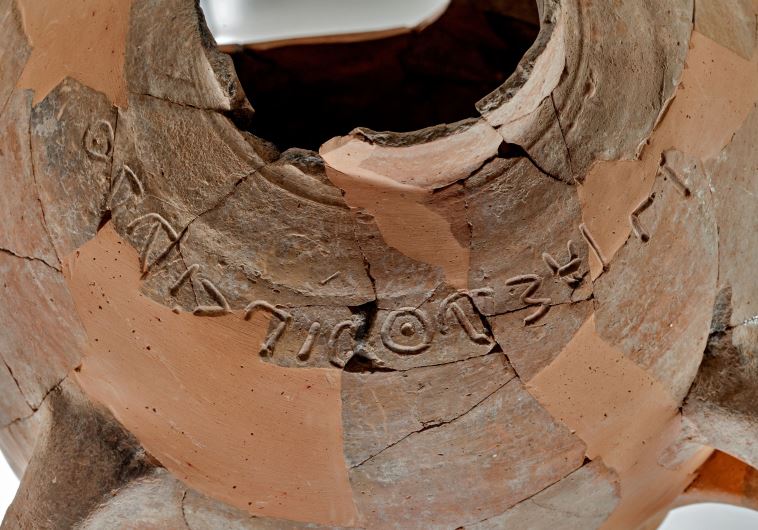
The scientists working on the discovery claimed that “The name Beda is unique and does not occur in ancient inscriptions or in the biblical tradition” but this name we can easily connect in ancient history to King Abedbalos and in the Bible to a prophet of Baal named Obadiah.
There are several Obeds or Obadiahs listed as the name of 13 Israelites in the Old Testament and as I mentioned above, the most notable is the grandfather of King David who is the son of Boaz and Ruth – the Moabite widow (Widow’s Son) Ruth 4:17, Ruth 4:21 = 1 Chronicles 2:12; Ruth 4:22
It is important to note that Obed or Obadiah, AKA the widow’s son is also listed as the governor of Ahab’s palace (1 Kin. 18:3-7, 16) and as a descendant of David, he is the “head of a family”(1 Chr. 3:21).
The reason he is considered in charge of the Tribe of Judah and a master of Jerusalem is the fact that he is a son of Boaz through Salomon whose father Nashon was appointed by Moses, upon God’s command, as prince and military commander of the Tribe of Judah and one of the leaders of the tribes of Israel.
Salmon is the patrilineal great-great-grandfather of David mentioned in 1 Chronicles 2:10-11, Ruth 4:20,21, Matthew 1:4-5 and Luke 3:32
The son of Nashon: he married Rahab, by whom he had Boaz. 1 Chron. ii. 11, 51, 54; Ruth iv. 20, 21.
Nashon’s role is variously translated as “leader” and census-taker, one of the “heads of their ancestral houses, the leaders of the tribes”, “first .. over the whole company”, and “prince of the sons of Judah”.
In the Tribe of Judah and his brothers; from Judah, Pharez and Zarah, by Tamar; from Pharez, Hezron ; from Hezron, Aram ; from Aram, Aminadab ; from Aminadab, Nashon ; from Nashon, Salmon ; from Salmon, Boaz, by Rahab; from Boaz, Obed, by Ruth.
As you can witness, Nashon is one of the most important people in the Scripture from the Old Testament given the fact that he was “legally appointed” as leader and prince of the sons of Judah whose most important son was Boaz who happened to marry a widow from another tribe named Ruth in order to produce a new son named Obed or Obediah who would then become the “widow’s son.”
Nahshon was, through Boaz, the direct male ancestor of David, and thus of Solomon and all of the kings of the Kingdom of Judah and Nahshon is also mentioned in the New Testament in the genealogy of Jesus.
With that said, Obed of the Old Testament plays a critical role in the New Testament by uniting a divided Israel of two kingdoms (Pillars of Jachin and Boaz) into one bloodline in which he represents the Widow’s Son.
Here is an image of Obed who is named Obeth at the Kent England Canterbury Cathedral in The West Window Of The Nave Stained Glass Window showing Obed in the center between what appear to be the two Masonic pillars of Boaz and Jachin.
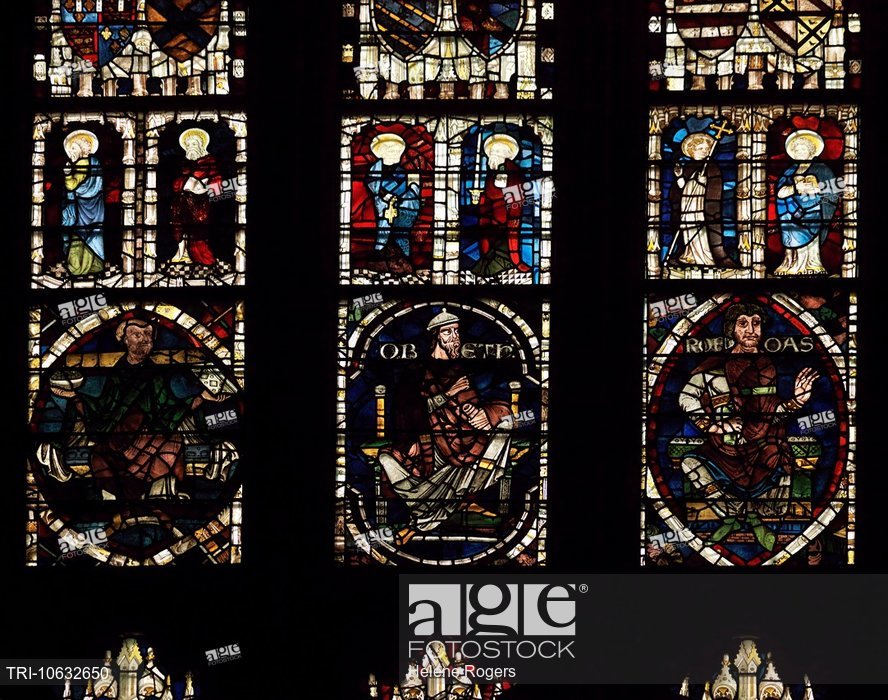
We find Obed being honored in Kent, England because this is an early medieval kingdom of Judah was said to be founded in the 5th century by a people called the Jutes – members of a Germanic people from continental Europe, some of whom settled in Britain after the withdrawal of the Romans.
Father of English History and Doctor of the Churhc, Saint Bede (lived AD 673-735) said that the King of Britain had brought the Jutes into Britain to protect his realm from Scots (from Northern Ireland) and Picts (from Scotland).
Bede had written; “The new-comers were of the three strongest races of Germany, namely, Saxons, Angles and Jutes. “Of Jutish origin are the men of Kent, and the Wihtsaetan; that is the tribe dwelling in the Isle of Wight.”
The Jutes and men of Kent play into the prophecy as I mentioned in my article, The Masonic Archons of the Tribe of Judah.
It is from the Kingdom of Kent where it has been prophesied in the bible as leading by ad hoc leaders known as Judges.
Not surprisingly, this is the precise location where we find all the Kings, Queens, Princes and Princesses of the United Kingdom hail from ruling by way of the monarchy.
The word “monarch” (Latin: monarcha) comes from the Greek language word μονάρχης, monárkhēs (from μόνος monos, “one, singular”, and ἄρχω árkhō, “to rule” (compare ἄρχων arkhon, “leader, ruler, chief”) which referred to a single, at least nominally absolute ruler of hereditary rule.
Hence, the reason in the bible why this tribe is referred to as leading by ad hoc leaders known as Judges to rule “their people,” and why currently out of 44 nations, 16 of them recognise Queen Elizabeth II as their head of state.
In addition, today we find their Masonic descendants represented in the Old Kingdom of Jute, which was originally Juteland or the land of the Jutes, and is now known as the Kingdom of Kent. Jutland, is regarded as Judah’s land. An adjective for Jute is “Jutish,” pronounced jootish.
The Grand Master of Freemasonry from the Kingdom of Judah AKA Kent, and is called the Duke of Kent.
According to the prophecy of Jacob, concerning the time of the corning Messiah, “Obed begat Jesse, and Jesse begat David, of whom, Christ came, who is God over all blessed forevermore.” (Gen. xlix. 10)
To be continued…
SOURCES:
1. Source: Mackey’s Encyclopedia of Freemasonry
2. A Lexicon of Freemasonry (Page 137) Albert Gallatin MACKEY – 1845
3. Other sources noted above and or can be easily researched using Google 😉
Moe is the founder of GnosticWarrior.com. He is a father, husband, author, martial arts black belt, and an expert in Gnosticism, the occult, and esotericism.
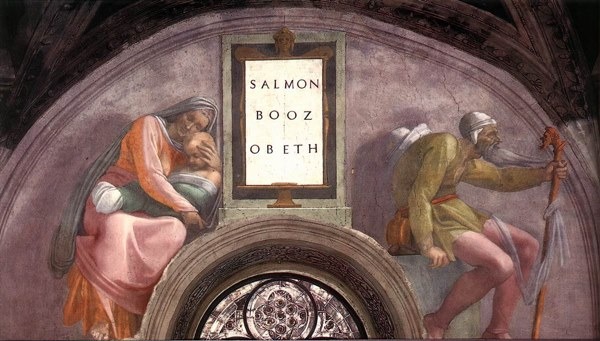
by Moe | Sep 2, 2019 | History of the Brotherhood, Latest Media
“When Abibalus was dead, his son Hiram received the kingdom.” – Josephus

The ancient historian and priest of Byblos, Sanchuniathon or Sanchoniatho (Phoenician: 𐤎𐤊𐤍𐤉𐤕𐤍) had dedicated his books on Phoenician history to King Abibalus (Abibalos, Abedbalos, or Abi’Baal Phoenician: 𐤀𐤁𐤅𐤁𐤏𐤋 – meaning “My father is Baal”) who reigned approximately in the 10th century BC.
It was said Sanchuniathon’s book on the history of his race was later translated by Philo Byblius which was approved by other investigators and he is highly commended for his history by both Porphyry and Eusebius and he is quoted by both Meander of Pergamon and later by the Roman-Jewish historian, Josephus Flavus.
Father of Early Christian history and Bishop of Caesarea, Eusebius had written in Praeparatio Evangelica I-IX;
“Now, the historian of this subject is Sanchuniaton, an author of great antiquity, and older, as they say, than the Trojan times, of whom they give testimony of having been approved by the exactitude and the truth of their Phoenician history. Philo of Byblos, not the hebrew one, translated all his work from the Phoenician language into Greek, and published it.”
Josephus informs us that these kings kept careful records, “That the Tyrians had their public Records, which they carefully preserved; in which were written the most material Transićtions relating both to themselves and other neighbouring Nations. In which was “ particularly recorded that Solomon built the Temple at Jerusalem 148 Years and eight Months before the Tyrians built Carthage.”
It would make sense that these people kept careful records given the fact that the Phoenicians and the location of the so-called Tyrians was also known as Byblos and this name is very close to the name of this king – Bab-lus without the appellation of Abi which means father.
They are some of the first people to invent writing and were the inventors of the most famous book we know as the Bible is the Old Testament (Old Law), they were said to be judges of their people and they were also heavily involved in commerce with papyrus being one of their biggest businesses.
According to Josephus and Menander who would most likely hail from the same family since they were in charge of keeping records thereafter, from the time of King Abibalus to the death of King Hiram’s son, Ithobaal or Ethbaal, which occurred about the time of the fall of Troy, was 169 years.
As you can see, Abibalos is famously listed in history and in the Bible as the first king of Tyre and Berytus and also as King Hiram’s father (Abi) but not much else is said to be known about him.
In researching history for this king, I have found various spellings of his name over the last 2,000 plus years such as the Phoenician: 𐤀𐤁𐤅𐤁𐤏𐤋, Latin: Abibalus and also Abedbalos, Abibalos, Abibal, Abida, Abdon, and can be connected to the Old Testament prophets and judges of Israel known under the names of Obed, Obediah, Ebed, Bedan, and or Beda and even the name Abbadon.
Also, this same king is listed as the king of many place names such as Tyre, Byblos, Berytus etc. which I hope to prove to all be the same king and place.
To quickly recap a previous article that had shed some light on the king’s real name which is based on the most recent archaeological evidence that I had written about in – King Hiram’s Son: Ithobaal.
Proof of the king’s real name was found when in 2012 by archaeologists working for Prof. Yosef Garfinkel of the Institute of Archaeology of the Hebrew University and Saar Ganor of the Israel Antiquities Authority (IAA) when they discovered a 3,000-year-old clay jar with ancient Phoenician writing in which they deciphered the meaning in 2015 which read;
“Ishba’al, son of Beda”.
The meaning they say is “man of Baal, son of Beda.”

The scientists working on the discovery claimed that “The name Beda is unique and does not occur in ancient inscriptions or in the biblical tradition.”
As I mentioned in my previous article, this name we can easily connect in ancient history to King Abedbalos because it is very close with almost the exact same letters to a king who lives around this same time in the same area called “Abed-Balos, Bedan and or Beda.”
In the Jewish Antiquities, 8.144-149, Josephus quotes Menander of Pergamon who translated the Phoenician history into the Greek language, where he makes mention of both King Abibalus and upon his son Hiram whom dedicates a pillar in the temple to Zeus with timbers he had cut down from mount Lebanon and builds two temples. Josephus writes;
“When Abibalus was dead, his son Hiram received the kingdom from him, who, when he had lived fifty-three years, reigned thirty-four. He raised a bank in the large place and dedicated the golden pillar which is in Zeus’s temple.
He also went and cut down materials of timber out of the mountain called Lebanon, for the roof of temples; and when he had pulled down the ancient temples, he both built the temple of Heracles, and that of Astarte; and he first set up the temple of Heracles in the month Peritius; he also made an expedition against the Itureans, who did not pay their tribute, and when he had subdued them to himself he returned.
Under this king, there was Abdemon, a very youth in age, who always conquered the difficult problems which Solomon king of Jerusalem commanded him to explain.”
In “The Babylonians (Against the Greeks, 1.21)” Josephus again quotes Menander to show that Ithobaal [III] was the last king of Tyre after Nebuchadnezzar had conquered Tyre and that during Ithobaal [III]’s reign, Cyrus became king of Persia. Josephus had written;
“I will now add the records of the Phoenicians; for it will not be superfluous to give the reader demonstrations more than enough on this occasion. In them we have this enumeration of the times of their several kings:
Nebuchadnezzar besieged Tyre for thirteen years in the days of Ithobaal [III], their king; after him reigned Baal [II], ten years; after him were judges appointed, who judged the people: Ecnibalus, the son of Baslacus, two months;
Chelbes, the son of Abdeus, ten months; Abbar, the high priest, three months; Mitgonus and Gerastratus, the sons of Abdelemus, were judges six years; after whom Balatorus reigned one year; after his death they sent and fetched Merbalus from Babylon, who reigned four years; after his death they sent for his brother Hiram, who reigned twenty years. Under his reign, Cyrus became king of Persia.”
I had written about this history in a previous article, Cyrus the Great: The Masonic Messiah and His Masons at the City of Gnosis on Crete.
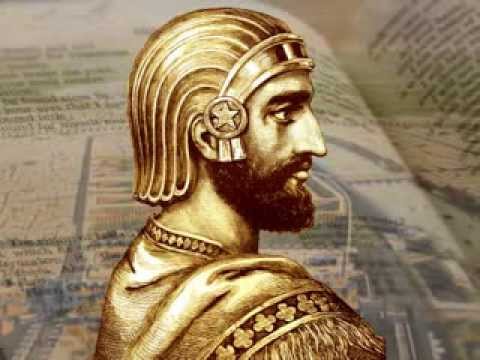
In the Old Testament, Ezra (3.7) infers that Jews and Phoenicians renew commercial relations:
“So they gave money to the masons and the carpenters and food, drink and oil to the Sidonians and Tyrians to bring cedar trees from Lebanon to the sea to Joppa, according to the grant that they had from Cyrus, king of Persia.”
Cyrus being arrived at Gnossos/Knossos the Capital of Crete goes to see the Temple of Olympian Jupiter , & admires the structure & ornaments of it, 5. He meets there Pythagoras, 9. Who informs him of the doctrine of Orpheus concerning the Golden age , II. He also relates to kirn the public dispute he had with Anaximander , with the arguments on hath fides , & how he got the victory with the help of a Miracle , IJ-X5.
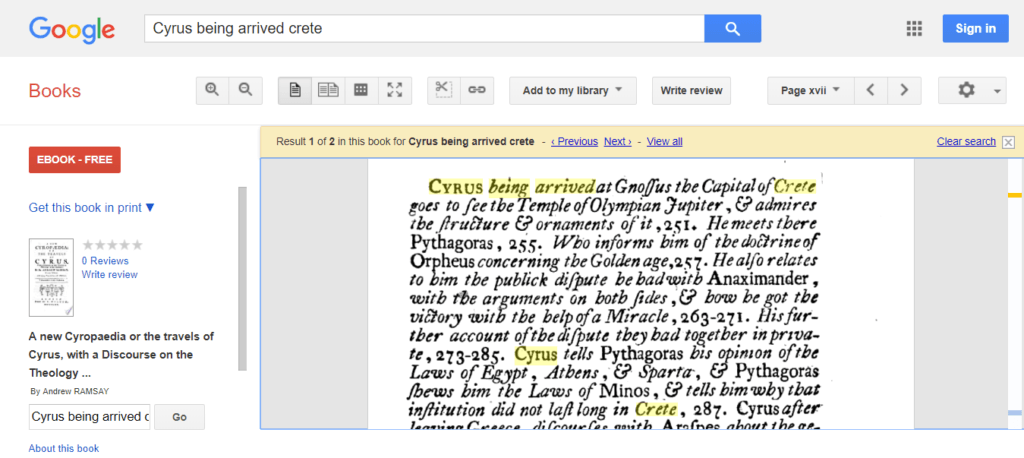
To the ancient Phoenicians, King Cyrus had left a lasting legacy on their history in restoring both the Temple of Solomon and also their religion. He is referred to by the Jewish Bible as Messiah (lit. “His anointed one”) (Isaiah 45:1), and is said to be the only non-Jew to be called so:
“So said the Lord to His anointed one, to Cyrus.” — Isaiah 45:1-7
The Masons now say, “Hence, from this connection of Cyrus with the history of Masonry, he plays an important part in the rituals of many of the high degrees.” (ENCYCLOPEDIA OF FREEMASONRY AND ITS KINDRED SCIENCES By ALBERT G. MACKEY, M.D.)
Dius, a Greek Hellenistic historian often cited by Josephus also makes mention of King Abibalus and his son Hiram’s building projects. He writes:
“When Abibalus was dead, his son Hiram reigned. He raised the eastern parts of the city higher, and made the city itself larger.
He also joined the temple of Jupiter, which before stood by itself, to the city, by raising a bank in the middle between them, and he adorned it with donations of gold.
Moreover, he went up to Mount Lebanon, and cut down materials of wood for the building of the temples.”
It is interesting to note that the King of Persia is considered a saviour to the Phoenicians of Byblos AKA Tyre and now Knossos on Crete whose family is represented by their first King Abibalus.
Sanchuniathon lists Abibalos (Abibalus) as the first king of Berytus but Josephus, writing in Latin, had written that King Abibalus was the first king of Tyre and Hiram whom he calls his son as the second king.
In researching this word and place, I have found the ancient name of Berytus was later substituted with Tyre in the historical records and it had been spelt many different ways throughout the course of time which includes many different changes depending on the country and language and also the historian charged with concealing (covering) the truth for Noble purposes.
For example, I find it interesting that we hear only once in Scripture of Tyre, but frequently of Beeroth and this same city is Biblically connected to King Hiram’s son in 2 Samuel 4:2 to Ishbosheth, who is said to be “Saul’s son,” had two men who were captains of bands: the name of the one was Baanah, and the name of the other Rechab, the sons of Rimmon the Beerothite, of the children of Benjamin (for Beeroth also is reckoned to Benjamin.)
The place known as Beeroth and Berytus is also called Berith, Beirut, Beyroot, Beeroth, Berouth, and Baruth is variously translated in modern times like in the King James Bible as “Beeroth of the children of Jaakan” (KJV); “the wells of Bene Jaakan” (NKJV).”
I would like to point out that in the word, Berytus, you will also find the word Tyre but spelt backwards – Berytus.
Some writers such as Hesiod say that Sanchuniathon was a native of Beirut and ‘obtained the records’ from a priest with the name of Hierombalos, and Abibalos, king of Beirut or, according to others, at Tyre.
He flourished a few years before the Trojan war, and, according to others, about the time that Gideon judged Israel. The name Hierombalos can be also be connected to Hiram-Baal.
Strabo speaks of two islands in the Persian Gulf, called Tyros or Tylos and Aradus, in which temples were found similar to those of the Phoenicians and places Zidon fifty miles from Berytus, and twenty-five from Tyre. Joshua, xi, 8, calls it “Sidon the Great,” by way of eminence. Josh. xix, 28,
As you can see with the many different names and spellings for the same history over the last 2,000 plus years, this history can be confusing but it begins to make sense once you connect all these names and different spellings as one.
In the ancient Scripture, the city listed as Beeroth (AKA Berytus, Berith, Beirut, Baruth, and Tyre) was located seven miles from Jerusalem, toward the city of Nicopolis. Beeroth is said to be of the Children of Jaakan (Jachin) and a city of the Gibeonites (Masons) Joshua 9:17; assigned to Benjamin 2 Samuel 4:2.
Eusebius says, Beeroth was seven miles from Jerusalem, toward Nicopolis. Jerome, writes Neapolis, or Naplouse instead of Nicopolis or The Holy Village of Ayios Nikolaos.
Nicopolis was anciently called Neapolis (Naplouse or Napolose) by Jerome and is listed as a city in Samaria between the Mountains of Gebal and Gerizem approximately 24 miles North of Jerusalem. As you can witness with all names from this time, the city Jerome calls Neapolis is also known as Nicolopolis and I have found it also under the names of Sychar, called also Sichem, and Shechem.
In researching these names, you will find that Neapolis is where St Paul arrived from the island of Samothracia and is listed as an ancient seaport town of Macedonia, east of Philippi (Acts xvi. 1 1.)
In the Book of Deuteronomy, we learn that “Moses went up from the plains of Moab unto the mountain of Nebo, to the top of Pisgah, that is over against Jordan,” to view the Promised Land before his death; and, in Deut. xxxii. 49, he is commanded, “Get thee up into this mountain Abarim, unto Mount Nebo, which is in the Land of Moab.”
Interestingly, we learn that Nebo is an important mountain that was taken or conquered by a people called the Moabites which then becomes “The Land of the Moabites and Nebo, the mountain of Moses AKA The Law.”
Nebo (Nabau), a mountain is celebrated as the scene of the death of Moses – a place in the tribe of Judah, Ezra ii. 29; Neh. vii. 33, a town belonging to the tribe of Reuben, taken by the Moabites, who held it in the time of Jeremiah (xlviii. 1).
This same mountain is called Lebanon by Josephus and Dius who Ptolemy says represent the two chains of Lebanon and Anti- Lebanon as commencing at the Mediterranean — the former on the north, the latter on the south (Geog. 5:15). Diodorus Siculus describes this mountain as extending along the coast of Tripolis, Byblus, and Sidon (Hist. 19:58); and the Litany falls into the sea a few miles south of Sidon.
We are told that “Moses, the servant of the Lord, died there in the Land of Moab, according to the word of the Lord; and he buried him in a valley in the Land of Moab, over against Bethpeor, but no man knoweth of his sepulchre unto this day (except Moe or Mo-Ab).”
The name Moab or Mo-Ab also further gives us a clue to the origins of these people.
Moab is known as an incestuous son of Lot; also his territory and descendants as Moab and The Land of Moab is the nation of which Lot’s son is represented as ancestor – Genesis 19:37; Numbers 21:29; Numbers 22:3 (twice in verse); Amos 2:1,2; Jeremiah 48:1,230t. Jeremiah 4:8 + often; having a king, Numbers 21:26; Numbers 22:4,10; Judges 3:12; 1 Samuel 12:9 +.
The Scripture tells us that King David’s great-grandmother Ruth was from Moab and a Moabitess.
There was constant fighting between Israel and Moab and both Saul and David fought there, and one of the Judges, Ehud, subdued Moab for 80 years (Judges 3:26-30).
If we are to look to history which will coincide with the Scripture, we will find that the Menander mentions King Hiram’s Son: Ithobaal (Ethbaal) who Josephus on the authority of the Tyrian annals says in against Apion, i. 18. that Ethbaal, the king of Tyre, whose daughter Jezebel was Ahab’s queen, succeeded Hiram, the contemporary of Solomon.
So, Ithobaal (Ethbaal, Eshba’al Ben Shaul or more appropriately, Eshba’al Ben Bada) who was the son of Hiram and grandson of Abibalus, had given his daughter to the King of Isreal, Ahab in marriage which means they would now be united tribes and of a new mixed blood/DNA.
Later, we learn Moab had freed itself from Israel’s domination after King Ahab’s death and it makes sense because they were now united tribes/kingdoms and of a new mixed blood/DNA which would make a new will for their descendants which would take the form of a new book or New Testament making the Old Law of blood and will ie: the Old Testament obsolete.
Moab plays into the story of King Abibalus and his son Hiram given the fact that we find in the Scripture that they are the descendants of a Moabite widow. But in the Bible, you will find their names are spelt differently from the Abibalus of concealing while revealing their true identities.
For example, there are several Obed’s listed as the name of several Israelites and one as the grandfather of King David who is the son of Boaz and Ruth – the Moabite widow (Widow’s Son) Ruth 4:17, Ruth 4:21 = 1 Chronicles 2:12; Ruth 4:22 Boaz is of the clan of Elimelech – meaning “God is King or My God if King.”
“And Boaz begat Obed, and Obed begat Jesse.” Boaz was of the tribe of Judah, and he was the son of a prince in Israel. This important child was a mixed-race that we know as Obed, became “the father of Jesse, the father of David.”
As I mentioned above, there are several prophets of Baal named Obadiah and Obed (Obad-iah vs. Abed-balos). and the form of Obadiah’s name used in modern Obadyah or Obadyahu and old Phoenician as Ebed or Abad, the Greek as Ióbéd and Obed or Obed-Edom; Septuagint is Obdios and Jehoiada, or as Abadias (ab-a-di’as), Abdiou, which I believe now can also be easily etymologically connected also to the name Abibalus.
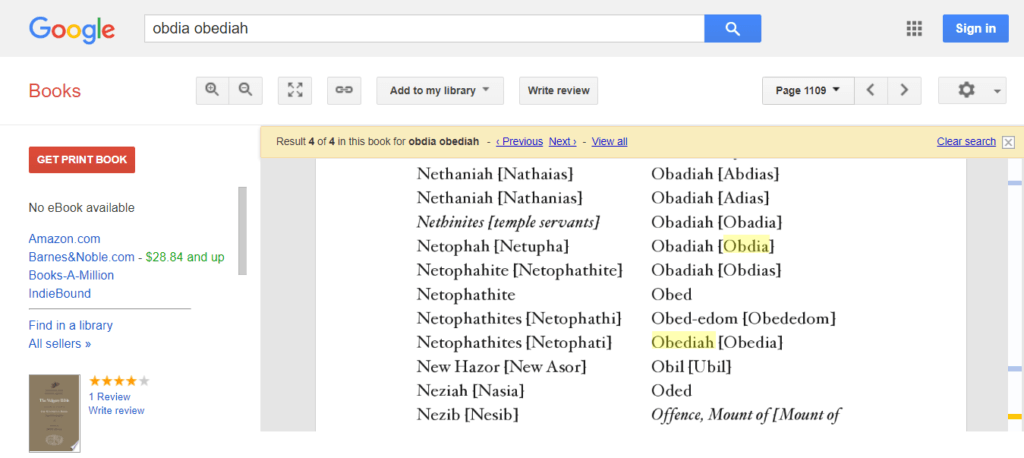
So, now we know based on historical accounts and several various citations, Obediah is the same as Obed and or Ab-Dias
Moab was a nation in which the city of Tyre was also located. However, if we are to search for Tyre in the Scripture and ancient history, we will find that it is only mentioned once in the Bible and was actually more commonly known as Beeroth (AKA Berytus, Berith, Beirut, Baruth) and now Byblos which was located 7 miles from the city of Nicopolis.
A city anciently called Neapolis and today as The Holy Village of Ayios Nikolaos which is near a mountain known as Mount Ida (Idumeans/Judeans) but anciently called by names such as Gebal, Nebo, Sychar, Sichem, and Shechem.
In searching for the mountain Gebal and as I explained in a previous article, Giblim: The Bible’s First Masons in the City of Our Lord, this is where the Gibeonites had come from and were also known by such names as the Giblites or, in Masonic language, Gibalim or Giblemites which they say is synonymous with Mason.
These first Masons hail from the City of Giblim which is also spelt under a plethora of names like Gebal, Gabala, Gubla, Giblim, Gibili, Gibyle, Givlim, Gebalene, Idumea, Judea and by the Arabs as Jebeil, Jubal and the Byblus/Biblus/Byblos of the Greeks.
The same Masons who honor their forefather’s achievements and ensure they are both remembered and carried out through the rites and rituals of the Craft.
For example, we know that in the legends of Masonry the Widow’s Son is called Hiram Abiff whose Masonic genealogy lists Tubal-Cain as his father. The name Hiram Abiff means “Father of Hiram” and does not apply to Hiram himself, but to his father who we know under names such as Abibalus and also Abedbalos, Abibalos, Abibal, Abida, Abdon, and can be connected to the Old Testament prophets and judges of Israel known under the names of Obediah, Ebed, Bedan, and or Beda and even the name Abbadon in Revelation.
They were also the chief scribes and judges for Israel ie: the Levites who were put in charge of the book the law by King David which became the Old Testament which was written as both proof of this history and a will for these people saying what should be done after they die.
These records detail the culture and history of the Sidonians whom the Tribe of Levi or Levatine renowned cities such as their first – Byblos and many others-from which Phoenician influence on Mediterranean art, religion, and commerce spread.
With that established, we can now say that “Biblos was built by Balus or Abi-Balus” – the city that he had founded.
He is also known in the Bible as Obed or Obediah and in Masonic lore as the father (Abiff) of Hiram.”
The true father of the original Scribes of the Old and New Testaments and the first Masons. – “The Widow’s Sons.”
PS – The Bible says that King Saul named his fourth son Eshba’al (1 Chronicles 8:33).
Moe is the founder of GnosticWarrior.com. He is a father, husband, author, martial arts black belt, and an expert in Gnosticism, the occult, and esotericism.

by Moe | Aug 17, 2019 | History of the Brotherhood, Latest Media
The Phoenician king of Byblos, Ahiram, also known in both biblical and Freemasonic history as King Hiram had a son named, Ithobaal (Ἰθόβαλος; Hebrew Ethbaal, Ishba’al, Latin – Ithóbalos, Εἰθώβαλος; Eithṓbalos – meaning with Baal).
In the bible, Ithobaal succeeded his father has the King of Tyre and the Sidonians and was the father of Jezebel who was the wife of the seventh king of Northern Israel Kingdom, Ahab. (IKi 16:31). The Jewish historian Josephus tells us he was formerly a priest of Astarte (Ashtoreth), consort of Baal, who usurped the throne and reigned over Tyre and Sidon for 32 years (Contra Apionem i.18.123).
Proof of his existence was found when in 2012, archaeologists working for Prof. Yosef Garfinkel of the Institute of Archaeology of the Hebrew University and Saar Ganor of the Israel Antiquities Authority (IAA) were excavating a burial site at Khirbet Qeiyafa. It was there they had discovered a 3,000-year-old clay jar with ancient Phoenician writing which shined a new light on this King’s true name, his family, and also their role in biblical history.

Three years later, in 2015, the scientists pieced together the ancient inscription on the jar which read;
“Ishba’al, son of Beda”.
The meaning they say is “man of Baal, son of Beda.”
The scientists are said to be puzzled about who this king said that only powerful people such as the ruling elite or priesthood had their names etched on pottery which suggests that a man of much importance in Judah used the jar to either store olive oil or wine.
According to Garfinkel and Ganor, “This is the first time that the name Eshba’al has appeared on an ancient inscription in the country. Eshba’al Ben Shaul, who ruled over Israel at the same time as David, is known from the Bible.
Eshba’al was murdered by assassins and decapitated and his head was brought to David in Hebron (2 Samuel 3–4). Inscription on the rim of the pottery It is interesting to note that the name Eshba’al appears in the Bible and now also in the archaeological record, only during the reign of King David, in the first half of the tenth century BC. This name was not used later in the First Temple period.
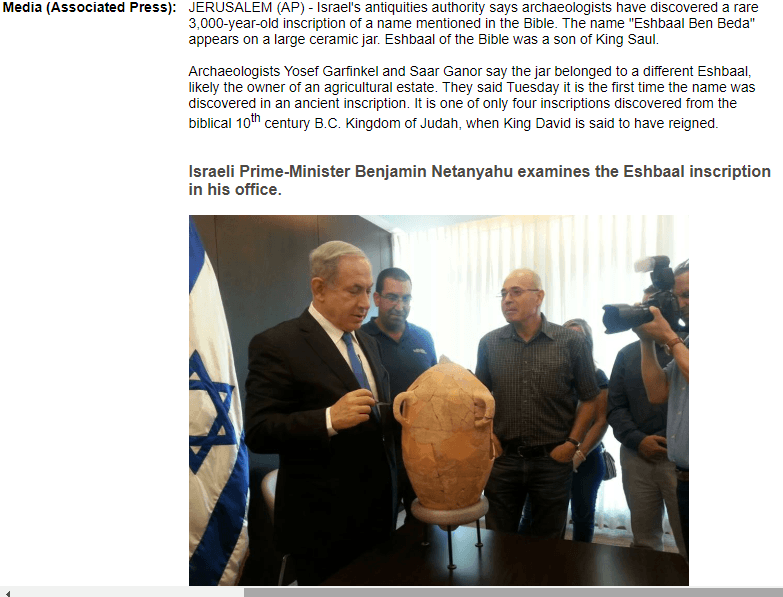
The correlation between the biblical tradition and the archaeological finds indicates this was a common name only during that period.”
They said, “The name Beda is unique and does not occur in ancient inscriptions or in the biblical tradition.”
However, I disagree with the researchers. In my own research, I have found that the name Beda and several different spelling of the same name have a long tradition both in the bible and in history.
For example, in the Scripture, we find a prophet of Baal named Obadiah who lived at the same exact time when King Ahab reigned and Jezebel.
This name Obadiah you will also find spelled many different ways such as Jehoiada, or in Greek as Abadias (ab-a-di’as), which I believe can be connected to Beda.
Proof of my theory can be easily found when searching scripture we discover in Kings, Obadiah with King Ahab and Jezebel.
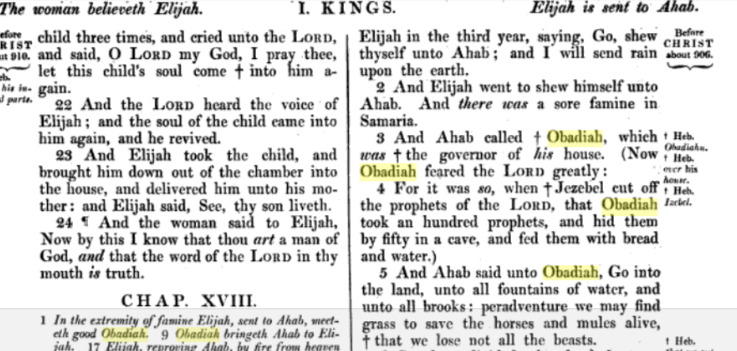
So we have a real-life inscription of a Phoenician King found by modern scientists who is named Ishba’al, son of Beda who is also known as Ithobaal (Ἰθόβαλος; Hebrew Ethbaal,Ishba’al, Latin – Ithóbalos, Εἰθώβαλος; Eithṓbalos – meaning with Baal) and had a daughter named Jezebel who he gave to marry King Ahab of Northern Israel.
According to the researchers, the fact that the name Eshba’al was incised on a jar suggests that he was an important person. He was apparently the owner of a large agricultural estate and the produce collected there was packed and transported in jars that bore his name. This is clear evidence of social stratification and the creation of an established economic class that occurred at the time of the formation of the Kingdom of Judah.
Archaeologist believed he probably owned significant agricultural estates.
Saar Ganor, director of excavation at Khirbet Qeiyafa for the Israel Antiquities Authority, said: ‘We have found hundreds of jars in big cities across what was the Kingdom of Judah.
‘This is the only one to have an inscription.
‘For the jar to bear this man’s name, it suggests he was someone very special and important.”
In my previous article, The World’s Oldest Curse: King Hiram’s Masonic Curse, I explained that that the oldest writing ever discovered was a curse written on the stone Sarcophagus of the Phoenician King Ahiram AKA King Hiram that was created by his son;
“Ishba’al, son of Beda”.
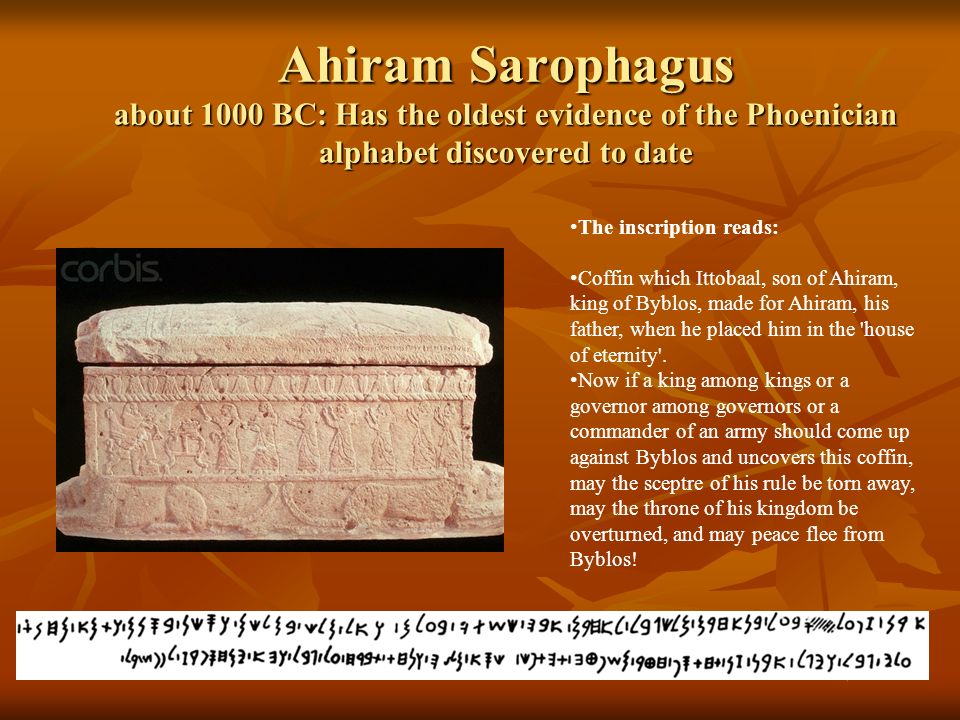
The inscription reads: Coffin which Ittobaal, son of Ahiram, king of Byblos, made for Ahiram, his father, when he placed him in the house of eternity . Now if a king among kings or a governor among governors or a commander of an army should come up against Byblos and uncovers this coffin, may the sceptre of his rule be torn away, may the throne of his kingdom be overturned, and may peace flee from Byblos!
The history relating to Ithobaal has been passed down to us by the Roman-Jewish historian Josephus’s whose work was derived from the Phoenician author Menander of Ephesus, in Against Apion i.18.
Menander mentions Ithobalus who Josephus on the authority of the Tyrian annals says in against Apion, i. 18. that Ethbaal, the king of Tyre, whose daughter Jezebel was Ahab’s queen, succeeded Hiram, the contemporary of Solomon.
Here it is said that the previous king, Phelles, “was slain by Ithobalus, the priest of Astarte, who reigned thirty-two years, and lived sixty-eight years; he was succeeded by his son Badezorus (Baal-Eser II), who lived forty-five years and reigned six. His son and successor, Margenus, lived thirty-two years and reigned nine. Pygmalion succeeded him, who lived fifty-six years and reigned forty-seven. In the seventh year of his reign, his sister, Dido, fled and built Carthage in Libya.’
Phelles was said to be the uncle of Ithobalus so he was of the same bloodline.
With that said, it is clear to me that “Ishba’al, son of Beda” is none other than Ithobaal (Ἰθόβαλος; Hebrew Ethbaal, Ishba’al, Latin – Ithóbalos, Εἰθώβαλος; Eithṓbalos) who in the Scripture is named Obadiah.
Another name to connect to this family is one we can find in the Bible where it says that King Saul named his fourth son Eshba’al (1 Chronicles 8:33).
Could King Saul also be Hiram Abiff and Obediah?
Here are some more images courtesy
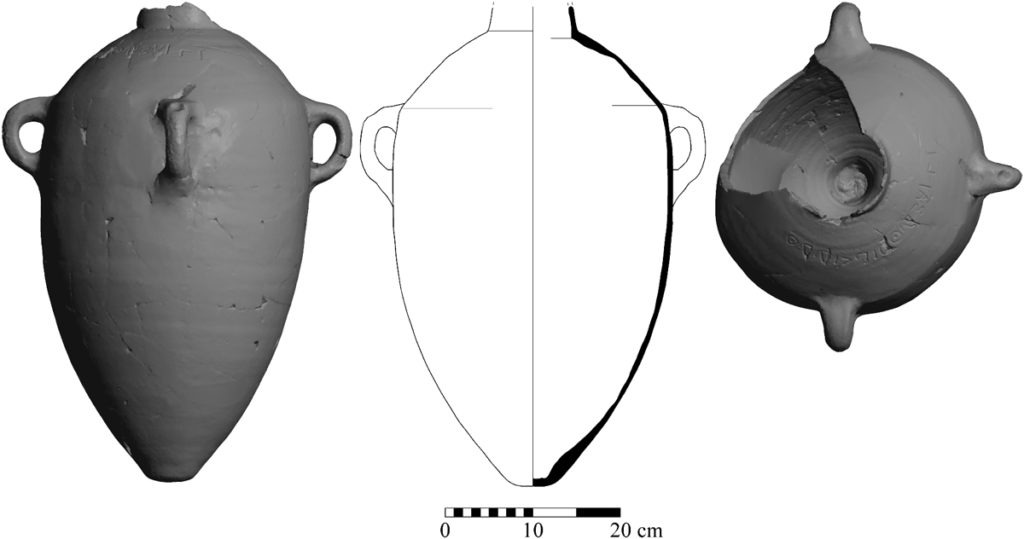
To be Continued:
Sources:
Press release by Israel Antiquities Authority
All cited above or open-source and readily available online.
Moe is the founder of GnosticWarrior.com. He is a father, husband, author, martial arts black belt, and an expert in Gnosticism, the occult, and esotericism.
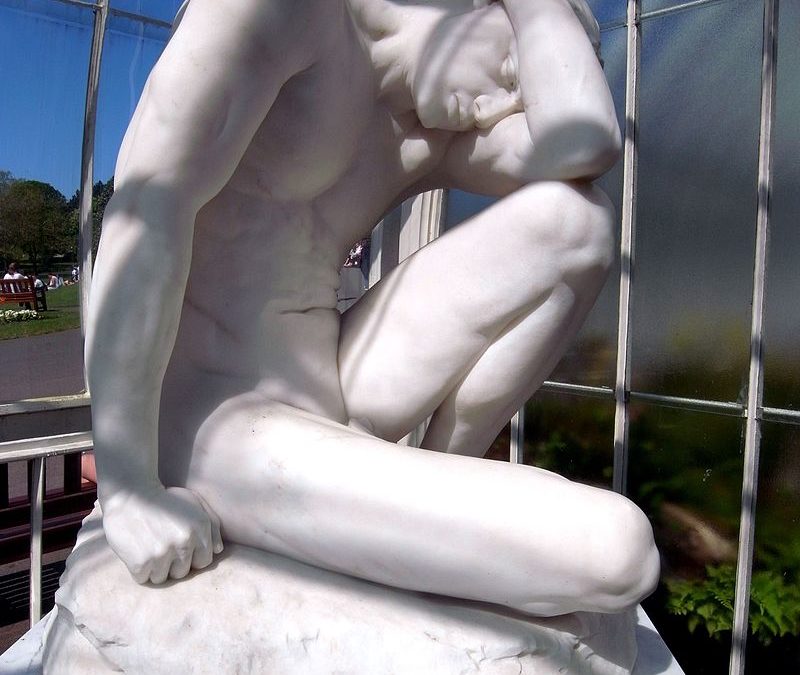
by Moe | Aug 15, 2019 | History of the Brotherhood, Latest Media
One of the most ancient Phoenician historians and a priest of Byblos, Sanchuniathon (Phoenician: 𐤎𐤊𐤍𐤉𐤕𐤍) had traced the ancestry of his people, the Phoenicians to Cain who was the eldest son of Adam.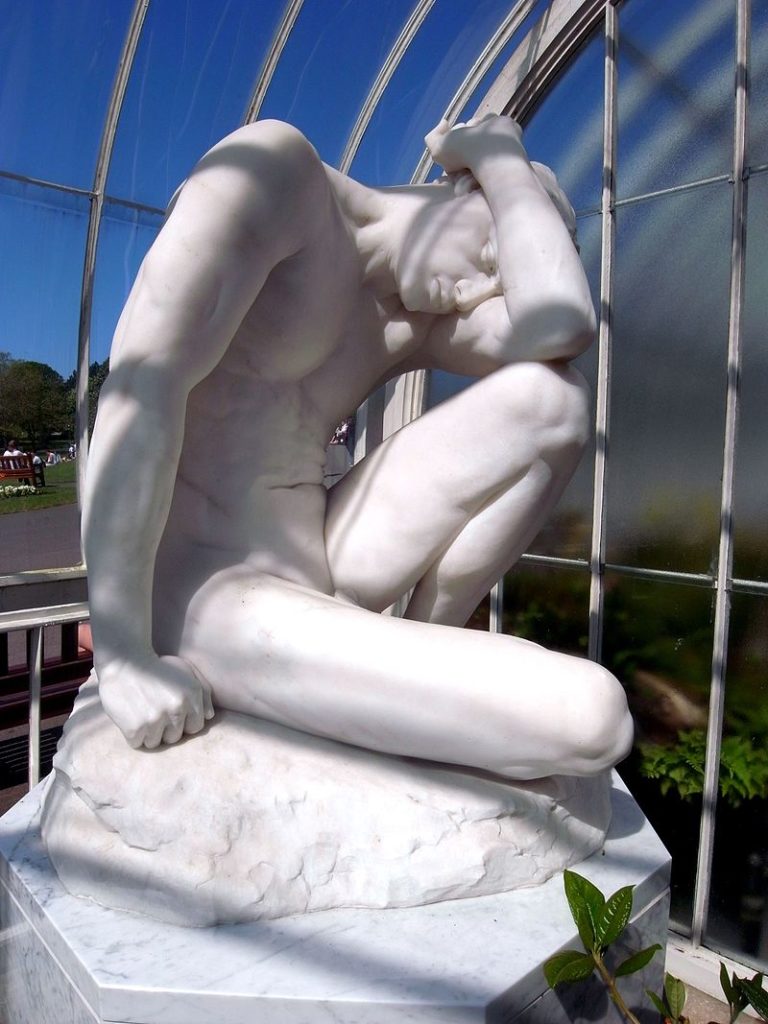
The history of Sanchuniathon was compiled into three now lost works originally written in the Phoenician language which has reached us from the Greek translation in the early second century AD by Philo of Byblos who was employed by the Romans to record this sacred history in the time of Emperor Hadrian, according to the Christian bishop Eusebius.
One of the greatest scholars and historians of the seventeenth century, the French Samuel Bochart (1599–1667) had identified the Phoenicians as the Greek name of the people who in Hebrew are called Canaanites in his books, Geographia Sacra seu Phaleg et Canaan (Caen 1646) which exerted a profound influence on seventeenth-century Biblical exegesis.
Richard Cumberland (1631 – 1718) was an English philosopher, author, and Bishop of Peterborough also identified the Phoenicians as the lineage of Cain.
This fact of Phoenician’s as descendants of Cain and dwelling in the land of Canaan as been known for thousands of years.
For example, all the early Church Fathers identified Canaan with Phoenicia and Canaan which for many centuries, considered as names of the same country. This history is also found in the Bible in passages such as Exodus vi. 15. with Gen. xlvi. 10. and Exod. xvi. 33. with Josh. v. 12., in which passages, for the Hebrew words translated Canaanitish and land of Canaan, the Septuagint reads Phoenician and the country of Phoenicia.
The name Kenaan is preserved on a coin of Laodicea of the time of Antiochus Epiphanes, whereon Laodicea is styled “a mother city in Canaan,” ללארכא אם בכנען Kna or Chnd (Χνᾶ ) is mentioned distinctly by Herodian as the old name of Phoenicia. Hence, as Phoenicians or Canaanites were the most powerful of all tribes in Palestine at the time of its invasion by Joshua, the Israelites, in speaking of their own territory as it was before the conquest, called it “the land of Canaan.”
Homer, the ancient Greek poet (c. 1000 B.C.) is the earliest source mentioning “Phoenicians (Phoinikes – Phoiniké) from Tyre and Sidon” and telling of “Sidon which is in Phoenicia”.
33rd Degree Freemason and biblical scholar, Manly P. Hall confirms this by stating in his work, ‘The Secret Doctrine in the Bible‘ that “Cain is a race, we then understand that the story of his wanderings is an account.”
This explanation solves such problems ‘as arises in Genesis 4:15 where the wife of Cain is mentioned, yet the Scriptural accounts infer that at that time Cain and Abel were the only progeny of Adam, sttpposetll yth~lr-m-cm-in-tlte -workl-:–also in the same verse Cain builds a city which he named after his son.
One man could scarcely build a city nor could the abode of one man be termed a city. But when we realize that Cain is a race, we then understand that the story of his wanderings is an account of racial migration.”
This race who were known by modern man and the Greeks as Phoenicians and in the bible as the Sons of Cain. A people who called themselves the Sidonians and have been well known by both ancient and modern historians to have migrated to various lands and islands such as Crete to circumvent the world.
We are a confused race of people who in the bible are represented by our father Cain who at the beginning of this 6th Age in which we are in the 2019 year, commits murder out of jealousy of his brother Able and was then allegedly cursed by God to be a fugitive and a vagabond ie: a wanderer from place to place without a true home or real job.
When I look at my own family and fellow Phoenicians in our so-called modern era, I can not only witness this curse in real-time, I see the slave mark of Cain branded onto my skin and this history is part of my DNA which I have inherited from my ancestors.
The facts are that the history of the New Testament Biblical Patriarchs traces their genealogy all the way back to Adam and Eve through the line of Seth. This is why most of the sacred biblical history in the 6th Age and the New Testament ie: the New Law is chiefly confined to the bloodline of Seth, and affords few facts and history concerning that of Cain and his bloodline other than what you will find on my website.
Throughout the 6th Age, the posterity of Cain became more degenerate and wicked; and on the other hand, the descendants of Seth were honored as eminent for their piety and virtue. However, according to Josephus, over the centuries said to be equaling seven generations, The Sons of Seth (Sethians/Romans) became corrupt and profligate; and every kind of wickedness overspread the earth.
With that said, I have proved not only that I’m a descendant of these same Phoenicians and Sethians who has been tasked to reconstruct this history and has I prophetically stated back in 2009 to the current establishment of the Roman Catholic Hierarchy and Freemasons;
“We started the Brotherhood.”
Moe is the founder of GnosticWarrior.com. He is a father, husband, author, martial arts black belt, and an expert in Gnosticism, the occult, and esotericism.
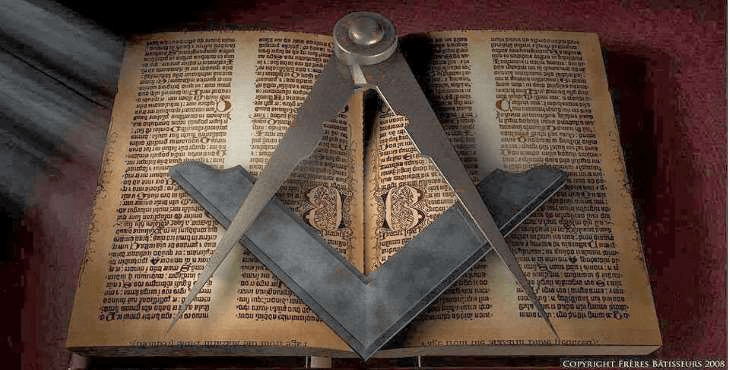
by Moe | Aug 13, 2019 | History of the Brotherhood, Latest Media
The city where the cornerstone of the modern world had been formed is an ancient place known by the names Gebal, Gabala, Gubla, Giblim, Gibili, Gibyle, Givlim, Gebalene, Idumea, Judea and by the Arabs as Jebeil, Jebilee, Jubal and the Byblus/Byblos of the Greeks. Words that can be used interchangeably for they have the same meaning.
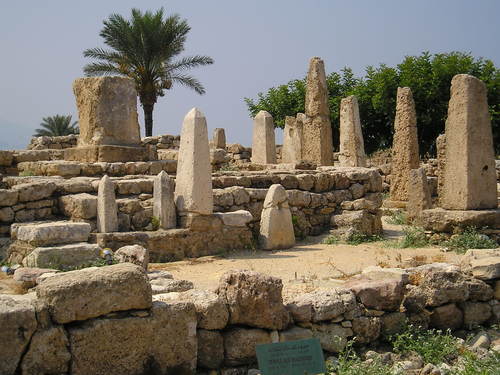
According to Philo who was employed by Rome as one of the conservators of the most ancient Phoenician historian and priest of Byblos, Sanchuniathon or Sanchoniatho (Phoenician: 𐤎𐤊𐤍𐤉𐤕𐤍), it was the first city of the Phoenicians and is also considered as the world’s “oldest continuously inhabited city.”
In the Bible, (Psalm lxxxiii. 7), Gebal (AKA Byblos) is the name given to a district of country lying on the south of Canaan, within the territories of Edom; the inhabitants of which formed an alliance with the neighboring nations against Jehoshaphat, king of Judah. The ancients of Gebal were occupied in making and repairing the Tyrian ships, Ezek. xxvii, 9.
Father of Church History and Bishop of Caesarea, Eusebius writing in the first half of the fourth century had used Gebalene for Gebal and said that Gebalene and the Idumea of the Old Testament were synonymous and Latin Catholic Historian Jerome had confirmed the same.
An ancient town where the Bible had originated and the location of the Masons’ first working tools and where Freemasons trace the origins of their heritage.

One of Freemasonry’s most esteemed people, King Hiram (Ahirom, Ahiram, Amram) was a ruler of Byblos. Physical evidence of his true existence was uncovered in 1923 when his stone Sarcophagus with the world’s oldest curse was actually discovered for a total of nine tombs belonging to the Phoenician kings were discovered in Byblos.
The exact place where King Solomon’s and Hiram’s builders, along with others from Gebal, shaped them, and prepared the wood and stones for building the house.
Evidence of this history can be found in various Bible passages that mention Gebal of the Bible such as in Ezekiel 27:9 – inhabited by seamen and calkers. Its inhabitants are called Giblim who are also known as the Giblites or, in Masonic language, Giblemites, and are said to have been distinguished for the art of stone-carving in the First Book of Kings which is translated from a Phoenician shipbuilding town; or stone-squarers. Josh. 13:5, 1 Kings 5:18 (32).
This is why 33rd Degree Freemason and author, Albert Gallatin Mackey says that Giblim is “A significant word in Freemasonry” in which the Geneva Bible translates Giblim or Giblimites as Masons.
Mackey had written in “Encyclopedia Of Freemasonry And Its Kindred Sciences“;
It is the plural of the noun Gibli, the g pronounced hard, and means, according to the idiom of the Hebrew, Giblites, or inhabitants of the city of Gebal.
The Giblim, or Giblites, are mentioned in Scripture as assisting Solomon’s and Hiram’s builders to prepare the trees and the stones for building the Temple, and from this passage, it is evident that they were clever artificers.
The passage is in First Kings (v, 18) and, in our common version, is as follows: “And Solomon’s builders and Hiram’ s builders did hew them, and the stone-squarers; so they prepared timber and stones to build the house,” where the word translated in the authorized version by stone-squarers is, in the original, Gblim.
It is so also in that translation known as the Bishop’s Bible. The Geneva version has Masons.
The French version of Martin has tailleurs de pierres following the English meaning; but Luther, in his German version retains the original word Giblim (see Ghiblim).
It is probable that the English translation followed the Jewish Targum, which has a word of similar import in this passage. The error has, however, assumed importance in the Masonic instructions, where Giblim is supposed to be synonymous with a Freemason. And Sir Wm.
Mackay concludes, “Drummond confirms this by saying in his origins (volume iii, book v, chapter iv, page 129) that ” the Gibalim were Master Masons who put the finishing hand to King Solomon’s Temple (see Gebal).”
This history is also part of the 5th Degree of Freemasonry. In Duncan’s Ritual of Freemasonry, it states that “the Phoenician word “gibal,” which makes “giblim” in the plural, signifies a mason or stone squarer.”
191:1 The Giblemites, or, as they are called in Scripture, the Giblim, were inhabitants of the city and district of Gebal, in Phoenicia, near Mount Lebanon, and were. therefore, under the dominion of the King of Tyre. The Phoenician word “gibal,” which makes “giblim” in the plural, signifies a mason or stone squarer.
In the Second Book of Kings, v. 17, 18, we read that “the King commanded, and they brought great stones, costly stones, and hewed stones, to lay the foundation of the house. And Solomon’s builders and Hiram’s builders did hew them, and the stone squarers” which last word is, in the original, giblim.
Gesenius says that the inhabitants of Gebal were seamen and builders, and Sir William Drummond asserts that “the Gibalim were Master Masons, who put the finishing hand to Solomon’s Temple.”
In this sense, the word is also used in the Book of Constitutions, which records that John de Spoulee, who, as one of the deputies of Edward III., assisted in rebuilding Windsor Castle, was called the “Master of the Ghiblim.”
It concludes, “The Giblim, or the Giblimites, were, therefore, stone-squarers or Master Masons.-Book of the Chapter, p. 56.”
Therefore, it makes perfect sense that in order to honor our Masonic ancestors from the Phoenician city of Gebal or Byblos, the 3 Great Lights (Symbols) of Masonry are the Holy Bible, the Square, and Compass and the main letter a G.
Moe is the founder of GnosticWarrior.com. He is a father, husband, author, martial arts black belt, and an expert in Gnosticism, the occult, and esotericism.
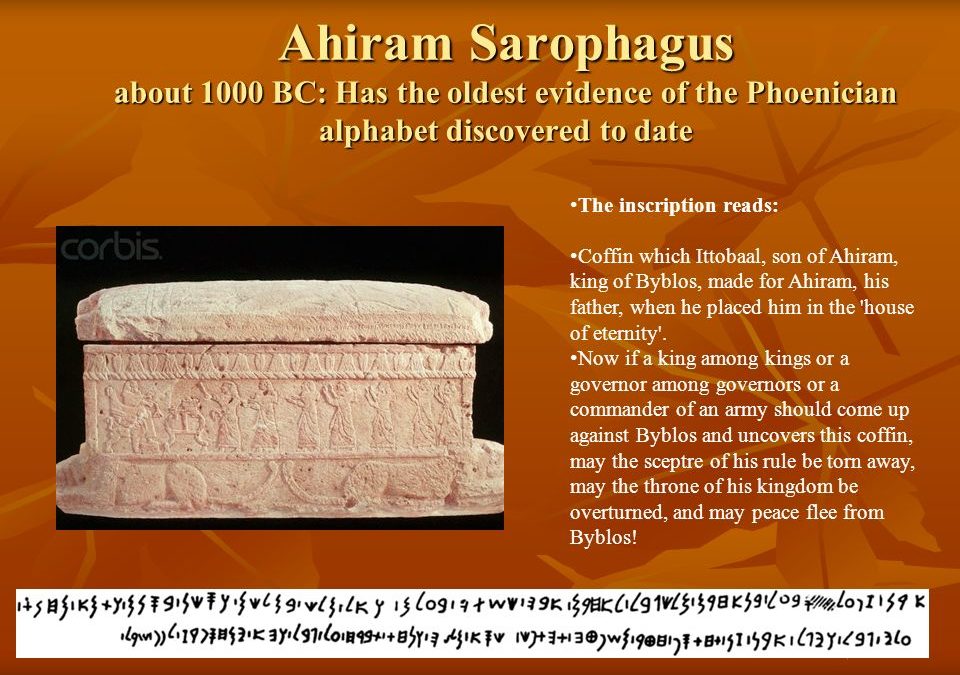
by Moe | Aug 3, 2019 | History of the Brotherhood, Latest Media
In my research into the Biblical Curse of Cain and history of the Masonic fraternity, I found that the oldest writing ever discovered is a curse written on the stone Sarcophagus of the Phoenician King Ahiram. Many biblical scholars and researchers such as myself have suggested a possible connection to who is also known in both Freemasonic and biblical history as King Hiram.
Ahirom, Ahiram, Amram, and Hiram are alternative spellings of the same name.

He was a ruler of the ancient city of Byblos (Jubal/ Jubayl / Jbeil) which is the same city where the first writing was discovered and also where the Holy Bible is said to have originated. According to the writer Philo of Byblos (quoting Sanchuniathon, and quoted in Eusebius), Byblos is also considered as the world’s “oldest continuously inhabited city.”
The Greeks had given the name of the lands they ruled as “Phoenicia,” and they called the city “Byblos” by the name “Papyrus” because this city was important in the papyrus trade. The Phoenician city, known to the Greeks as Býblos (Βύβλος) and to the Romans as Byblus, was important for their import of papyrus from Egypt.
The curse is written in ancient Phoenician writing with 22 letters, the same number as the Hebrew which also happens to be the world’s first alphabet. The scribes of Byblos were said to have developed this writing which became the precursor of all modern alphabets of Babel and all languages that are spoken today.
This is very important because not only was the world’s oldest curse discovered but it was also the world’s oldest writing in one of the world’s oldest cities where the bible had originated.
The inscription reads;
“A coffin made it [It]tobaal, son of Ahirom, king of Byblos, for Ahirom, his father, lo, thus he put him in seclusion. Now, if a king among kings and a governor among governors and a commander of an army should come up against Byblos; and when he then uncovers this coffin – (then:) may strip off the scepter of his judiciary, may be overturned the throne of his kingdom, and peace and quiet may flee from Byblos.
And as for him, one should cancel his registration concerning the libation tube of the memorial sacrifice.”
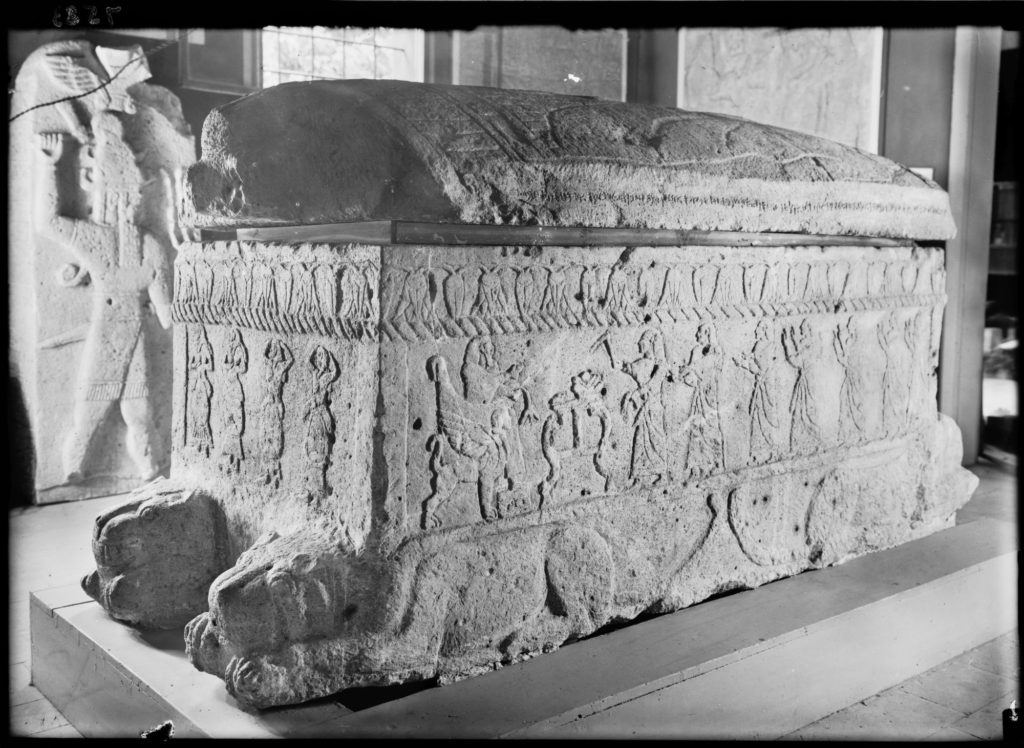
Another interesting Freemasonic fact is that the first priest offering tribute to the King appears to be holding a Masonic Square in his right hand. They also look very similar to the Egyptian priesthood proving further connections to Egypt which I have written about many times before.
The Sarcophagus of Ahiram was discovered in 1923 during an excavation in Byblos, which was led by the French archaeologist Pierre Montet. A total of nine tombs belonging to the Phoenician kings were discovered at Byblos.
Hiram’s tomb was discovered after it became exposed from heavy rains that caused the collapse of parts of a hill. The tombs were cut directly into the rock, and it was in tomb V that his sarcophagus, which is made of limestone, was found.
In my many previous articles, I have put forth research showing that Ahiram is also known biblically and Masonically as King Hiram who was the Phoenician King of Tyre on the Holy Island of Crete during the reigns of Egyptian Kings, David and Solomon who I have also connected to Ramesses II and III.
Physical evidence of these facts was found in Ahiram’s tomb when during the excavation some objects bearing the cartouche of Ramesses II (XIII century), were discovered in the burial chamber next to the sarcophagus.
It is said that King Ahiram was succeeded by his son Ithobaal I (Latin Ithobalus, Hebrew Ethbaal) (reigned 591–573 BCE) who is the first to be explicitly entitled King of Byblos. From the inscriptions on the lid of the sarcophagus, it seems clear that the one in charge of the ceremony was the king’s son.
This king is said by religious scholars to be identified with specifically Ithobaal III who according to the list of kings of Tyre of Josephus was reigning contemporary with Ezekiel at the time of the first fall of Jerusalem.
He was said to the father of the Jezebel and is mentioned in the First Book of Kings as the king of Sidonians.
Today, the Sarcophagus of King Ahiram is kept in the National Museum of Beirut in Lebanon.
Moe is the founder of GnosticWarrior.com. He is a father, husband, author, martial arts black belt, and an expert in Gnosticism, the occult, and esotericism.




















